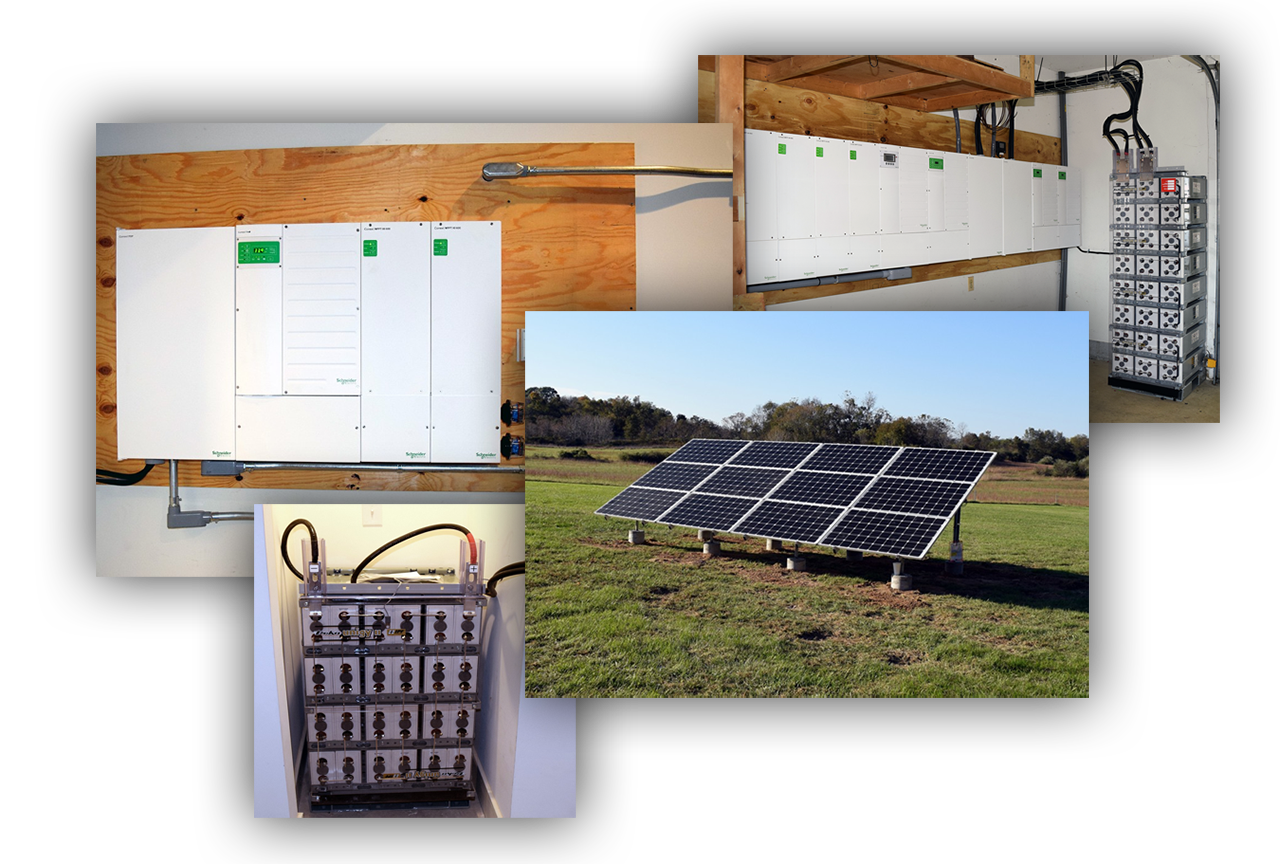Consider this: When the utility grid is operational, there is a limitless supply of energy. It is extremely reliable and constant. Day to day, you may not think about how much power you actually use.
However, once the grid fails and you’re running off-grid via solar and batteries, how you approach energy use must change drastically. There is a suddenly a very finite amount of power available. Even small appliances can use more power than you realize!
The energy stored in a battery is referred to as kilowatt-hours (kWh). One kWh is 1000 watts for one hour. Let’s assume for the sake of simplicity that you have a total of 20kWh of usable energy storage. This is the average size of batteries that we’ve historically installed. Let’s also assume for the moment that it’s nighttime and no solar energy is available.
If you run a 2kW (2000W) space heater at full power for 5 hours, that’s 10kWh of energy used. If you run the same heater for 10 hours, that’s 20kWh. Therefore, the 20kWh battery in our example would be depleted if that heater alone were run for 10 hours.
Conversely, a bunch of LED lights totaling 50w could run 24/7 for many days on that same battery, even without solar gain. To determine how much power that is, 50w = 0.05kW x 24 hours = 1.2kWh per day. This simple formula applies to all loads. Take the amount of wattage listed on the label multiplied by time to arrive at the energy needed for that load.
Mountain View Solar designs most battery backup systems to power certain critical loads. These loads were discussed before the sale to determine how much solar and battery storage you’d need to operate day to day if the grid were to fail. Typical critical loads would be a refrigerator, well pump, lights, microwave or coffee pot and some receptacles. Adding loads that weren’t planned for will deplete the battery sooner than expected.
One of the fastest ways to deplete a battery is via resistance heating. Even a small space heater as described above can quickly use up all the stored energy. Therefore, we typically avoid putting electric ovens, cook-tops, water heaters and heating loads in the critical loads panel. Heat is best obtained directly via wood or pellet stoves, and propane heating appliances. Light bulbs should all be LED, rather than incandescent.
The lifespan of a battery is measured in cycles and depth of discharge (DOD). A cycle is defined as a discharge / recharge operation. DOD is defined as how much of the stored energy is used during that cycle before recharged completely. When a grid-tied battery backup is on standby, the batteries are in a float condition. This keeps them topped up to 100% charge and will last many years. Once the grid fails and that battery is cycled, the lifespan is reduced more rapidly. The lifespan can be increased if less power is used between the recharges, so conserving power is more important, even if ample stored capacity is available for use.
One way to avoid excessive DOD is to run larger loads only during the day when solar can help out. For example, run appliances only while the sun is up, or as close to sunrise as possible. This will enable the solar to run the loads rather than discharge the battery, and possibly recharge at the same time if extra power is available. Turn as much off as possible before sunset to retain as much energy in the battery through the night as possible.
Another solution is an automatic or portable generator. If your system is equipped with an automatic generator, the generator will start when the batteries reach a low state of charge, and recharge the batteries. It will then shut off automatically. If you have a portable generator, periodically check the battery charge level on your system’s control panel. If the battery level is getting low, fire up and connect the portable generator and the system will begin recharging the batteries.
Once utility power is restored, the system will automatically resume operation of the loads on utility power, fully recharge the battery, and begin floating it to be ready for the next outage.
It may be a good idea to perform a power outage drill. To do so, turn the main breaker in the service panel off to simulate a power outage. At this point, your critical loads will be running on batteries and solar, off-grid. Observe how your use of energy affects the battery charge. Once complete, turn the main breaker back on to simulate restoration of utility power.
The description above is simplified as many technical factors affect batteries, lifespan and available power. However understanding these basics will enable you to maximize the use of your system. If you have solar and want batteries, or are interested in a backup or off-grid solution, please fill out our free estimate form.


